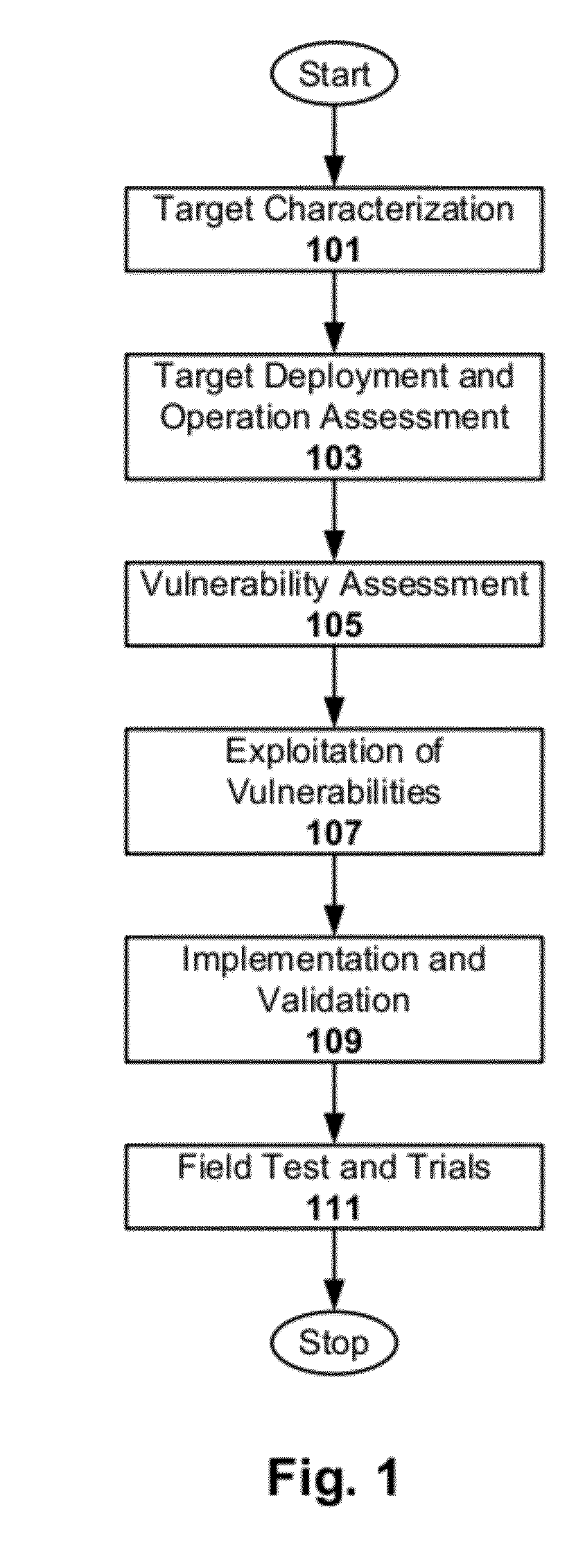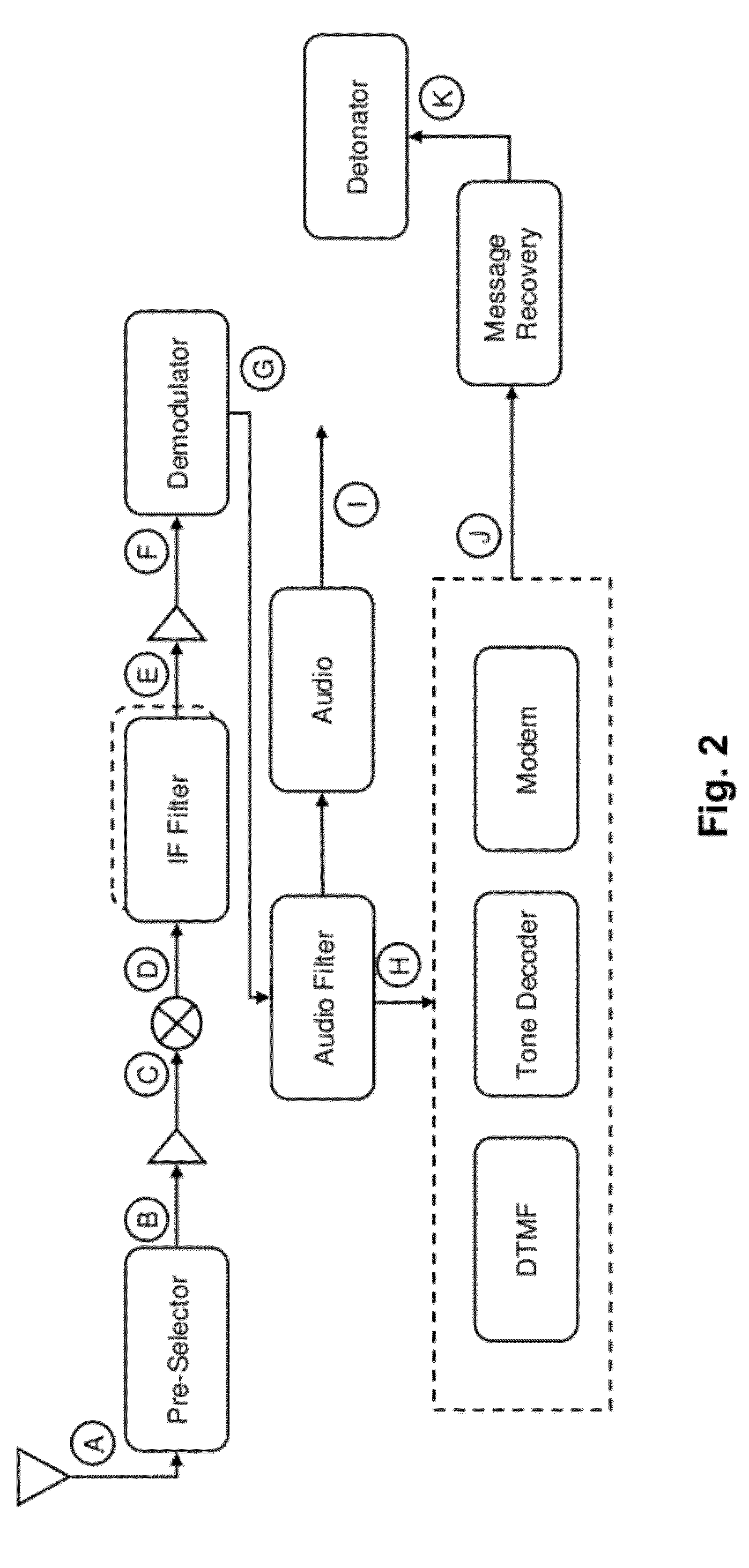RF communication receiver vulnerability assessment
a vulnerability assessment and receiver technology, applied in the field of wireless communication, to achieve the effect of reducing the risk of jamming
- Summary
- Abstract
- Description
- Claims
- Application Information
AI Technical Summary
Benefits of technology
Problems solved by technology
Method used
Image
Examples
Embodiment Construction
[0021]Techniques are disclosed for characterizing and identifying vulnerabilities associated with wireless communications devices. The vulnerabilities can then be exploited to diffuse or otherwise mitigate situations that employ such wireless communications devices in carrying out malicious activity.
[0022]Analyzing wireless communication devices to identify vulnerabilities is not a trivial task, as there is generally no convention or standard for guiding the process. Such analysis involves time consuming processes where a person has to manually define a number of characterizing tests, setup each test, perform the tests, collect the relevant test data, and interpret the data. A test report can also be generated. In addition to being time consuming, the tests may be prone to repeatability problems and / or error. Also, there tends to be a lack of consistency in analysis from one communication device or system to another. Also, given the manual nature and length of testing to be done, it...
PUM
 Login to View More
Login to View More Abstract
Description
Claims
Application Information
 Login to View More
Login to View More - R&D
- Intellectual Property
- Life Sciences
- Materials
- Tech Scout
- Unparalleled Data Quality
- Higher Quality Content
- 60% Fewer Hallucinations
Browse by: Latest US Patents, China's latest patents, Technical Efficacy Thesaurus, Application Domain, Technology Topic, Popular Technical Reports.
© 2025 PatSnap. All rights reserved.Legal|Privacy policy|Modern Slavery Act Transparency Statement|Sitemap|About US| Contact US: help@patsnap.com



